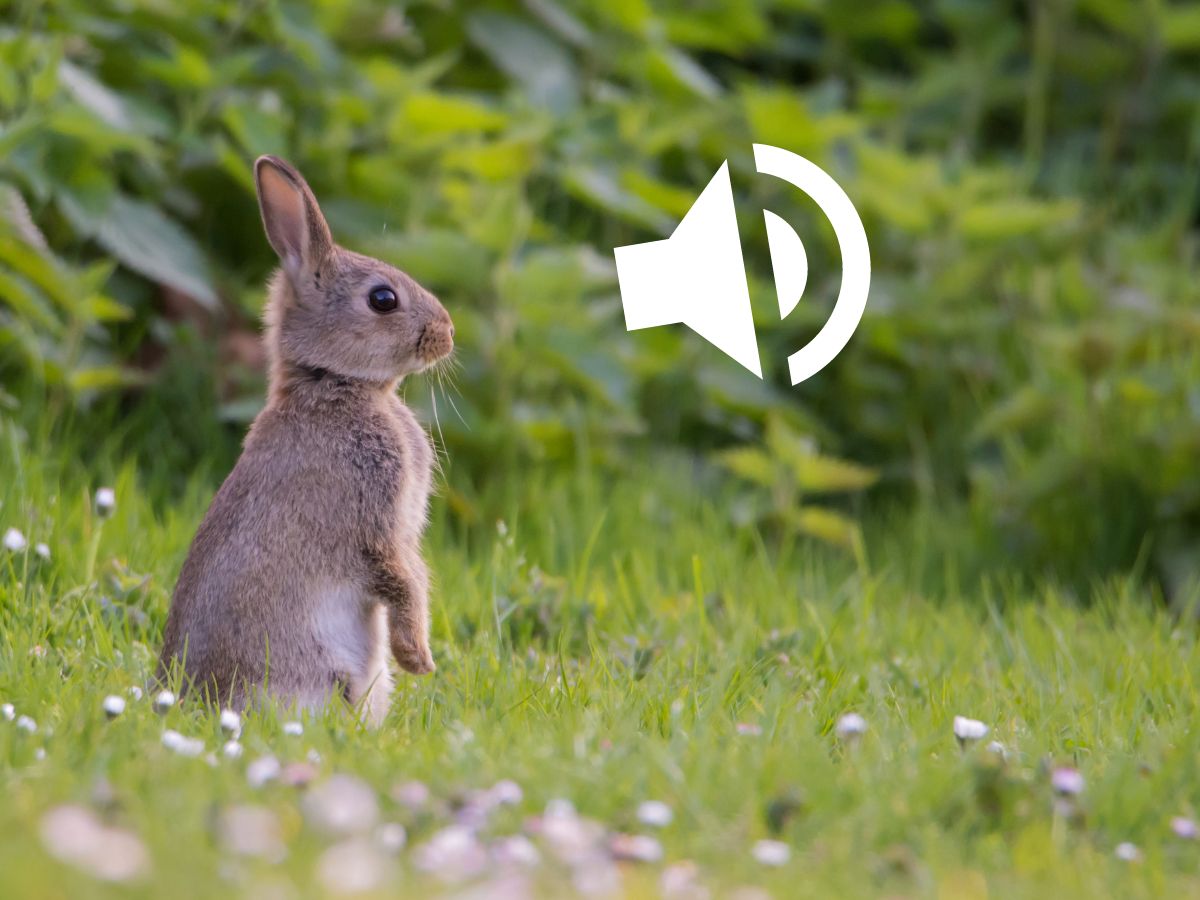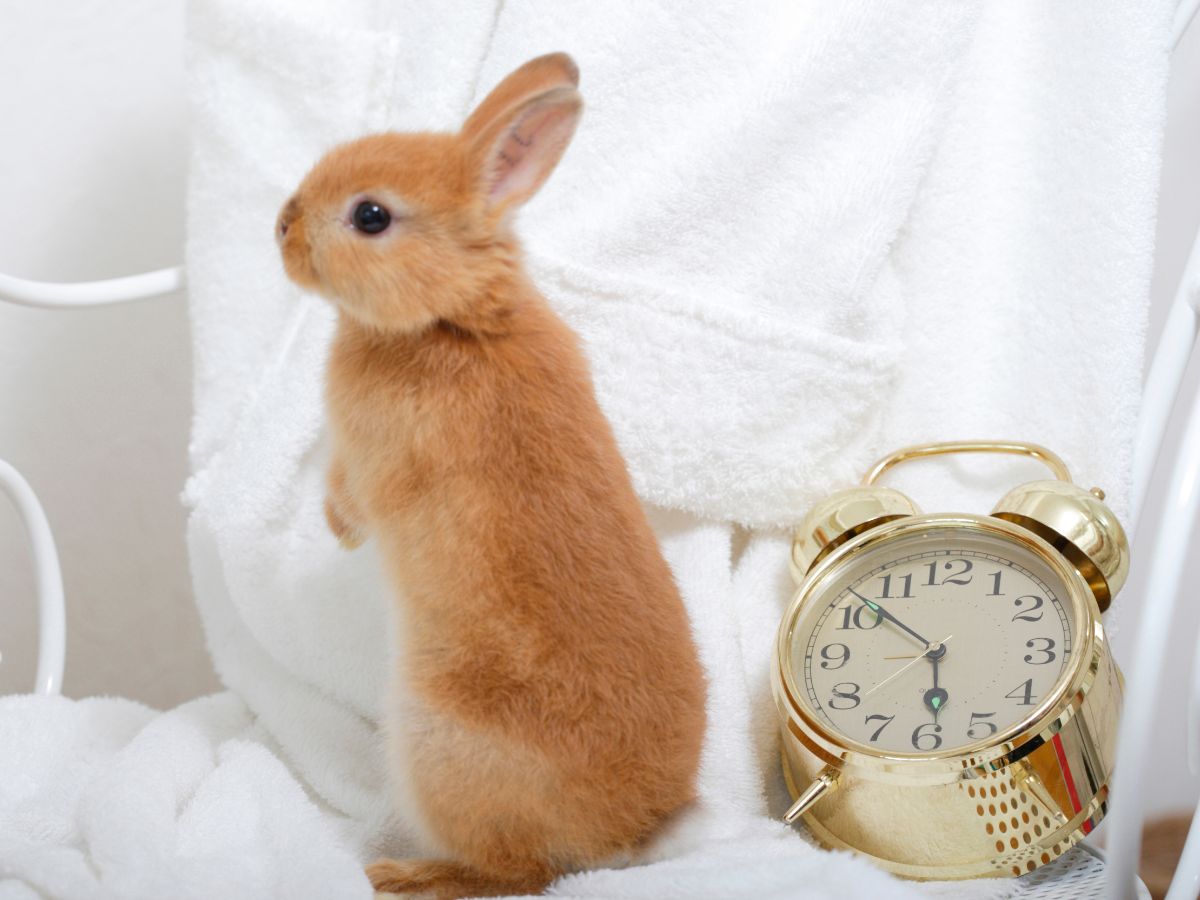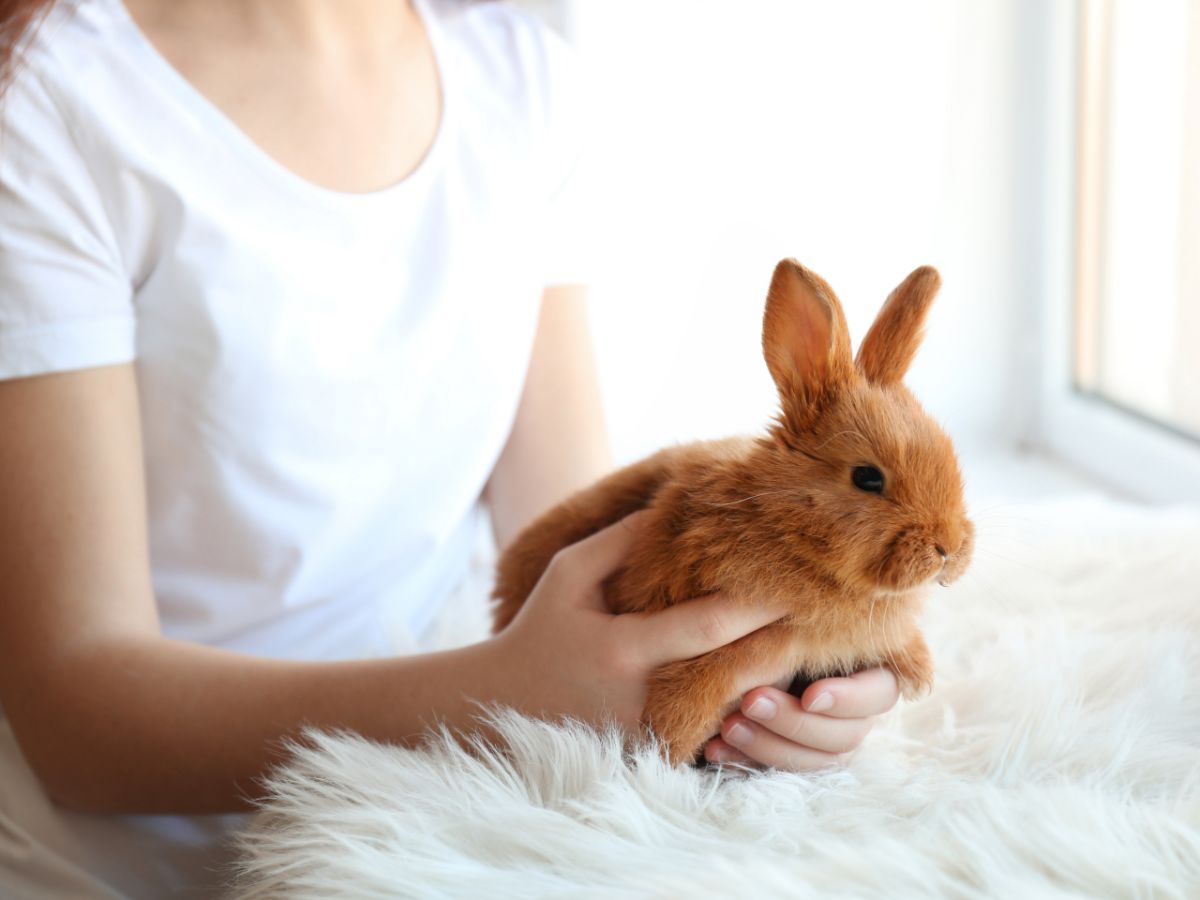Rabbits are quiet animals. In the wild, they use their silence to their advantage to hide away from predators. However, domestic rabbits may be more vocal when comfortable and happy. When your rabbit makes a sound, it’s essential to know what they’re trying to say to you.
The most common rabbit sounds are thumping or foot stomping, grunting, teeth grinding, clucking, purring, whining, growling, and screaming. While purring and clucking are associated with positive emotions, you must pay special attention to negative sounds like teeth grinding and growling.
Small noises like purring and clucking are common in happy rabbits and are a good sign that your bunny is content. But occasionally, your rabbit may make other sounds that can be alarming. Either way, understanding your bunny is essential to keeping your rabbit happy and healthy. So, what are the most common rabbit sounds? And what do they mean?
Contents
1. Rabbit Sounds: Thumping Or Stomping
Everyone knows that rabbits have a habit of stomping their feet. This behavior is also known as thumping. When your rabbit thumps their feet, it makes a slight thudding sound against the ground. While it may seem like a cute quirk all rabbits have, it is a way of warning other rabbits.
If your rabbit is thumping, they are usually trying to signal danger. In the wild, rabbits use thumping to communicate with other nearby bunnies that predators are nearby. However, domestic rabbits may make this sound as a way to complain. It’s an excellent way to tell if you’re doing something your bunny may not like.
2. Rabbit Sounds: Grunting
When a rabbit grunts, it sounds similar to a slight oinking noise. Rabbits tend to grunt as a sign of excitement or happiness. They may make this noise around their playmates to let them know they want to play.
However, your rabbit can also make this noise when they’re happy to see their favorite human! You may notice that your rabbit begins to grunt when you approach their hutch or when you’re engaging in play with them.
Male rabbits may also grunt as a way to signal a female mate. This noise is a way to let a female know that they are ready to mate. However, this noise accompanies other behaviors such as marking their territory and circling their female friend.
3. Rabbit Sounds: Teeth Grinding
Teeth grinding is a distinctive noise that sounds like scraping. Teeth grinding is common in small rodents such as guinea pigs and mice. But you may also find your rabbit grinding their teeth from time to time!
Rabbits grind their teeth when they are unhappy or in pain. In most cases, it’s your rabbit’s way of communicating that it is unwell. Your rabbit may also knock their teeth together to make a chattering noise.
When a rabbit’s teeth are chattering consistently, they are likely in great pain. This sound may be accompanied by behaviors such as refusing food or hunching over. If your rabbit exhibits any of these signs, it may be time to take it to the vet.
4. Rabbit Sounds: Clucking
Unlike chickens, a rabbit’s cluck sounds very different from what you may be used to. When a rabbit clucks, it can sometimes be confused for hiccups. Clucking sounds similar to small hiccups in close succession. While this sound is uncommon in domestic rabbits, it’s most often made by female rabbits.
Rabbits may cluck when they are happy and relaxed. They tend to make this sweet sound when they doze off in the sun or enjoy some of their favorite food. Some owners may also find that their rabbit makes quiet clucking noises when they are being petted or cuddled!
5. Rabbit Sounds: Purring
Much like clucking, a rabbit’s purr differs from the purring sound cats make when they’re content. While cats purr using their throat and chest, a rabbit’s purr is actually made with their teeth! Rabbits purr when they are happy and make this noise by gently rubbing or clicking their teeth together.
However, purring should never be confused with teeth grinding. Teeth grinding is a louder noise and is typically a consistent behavior coupled with teeth chattering. On the other hand, purring is a much softer noise and much less consistent.
6. Rabbit Sounds: Whining
Rabbits tend to whine or whimper when they’re unhappy. This disgruntled mood is often caused by other rabbits, although it’s not uncommon for rabbits to complain around their owners. Rabbits whine when scared or threatened by humans and other rabbits.
If you’re handling your rabbit and it begins to whine, it’s a good indicator that your rabbit has had enough! When this happens, it’s best to leave your rabbit alone for a little while so that it can settle.
7. Rabbit Sounds: Growling
Sometimes, a whine or whimper is followed up by growling. When your rabbit growls, it sends a warning signal. Like dogs, rabbits growl when they feel threatened or are primed to attack. If you have been handling your rabbit too often, it may begin to growl as a way to warn you that it wants to be left alone.
Scared rabbits may growl and bite in an attempt to get away from perceived danger. In this case, you should leave your rabbit to relax and avoid touching it. If you continue to play with your rabbit after it growls, you may be in for a nasty shock!
8. Rabbit Sounds: Screaming
One of the most alarming noises that your rabbit can make is screaming. Generally, rabbits will only scream in extreme situations. In the wild, rabbits will cry when they are being chased or hunted down by a predator. While this is an unlikely cause of screaming in domestic rabbits, it may happen if other animals chase them in your home.
Domestic rabbits will usually scream when they are incredibly ill. In most cases, your rabbit will scream because they are dying. So, if you hear your rabbit scream, it may cause concern.
Conclusion
Part of caring for your rabbit is knowing how to communicate with your pet. While rabbits are mostly silent animals, you may occasionally hear a slight noise. By understanding what a rabbit is trying to say when it makes a noise, you’ll be better able to cater to its needs.




